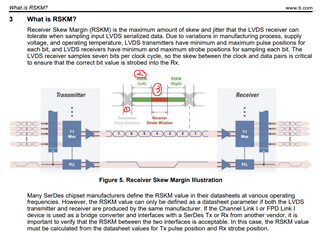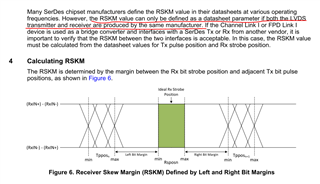Hi TI expert
According the snla249 mentioned , there are three part of skew parameter defined .
1.Transmitter pulse variation.
2.RSKM
3.Receiver Strobe Window.

Can you help to clarify in DS of DLPC231-Q1, tskew listed below represent to RSKM or strobe window?

BR Jingcheng


